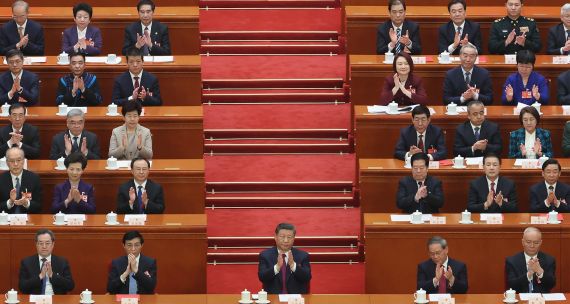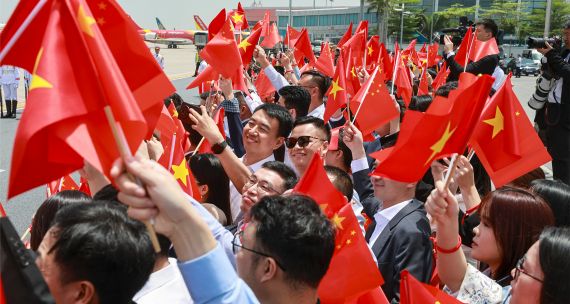The Takeaway
As countries around the world navigate U.S. President Donald Trump’s tariff threats, India has adopted a non-confrontational stance, balancing selective concessions with caution to safeguard its economic growth goals and avoid backlash from domestic producers who might lose their protections.
Although Beijing has expressed interest in closer economic ties with New Delhi, geopolitical concerns continue to steer India toward the U.S. and other Western partners. Canada risks falling behind as the U.S., U.K., European Union, and New Zealand inch closer toward sealing free trade deals with India.
In Brief
- On April 2, the Trump administration imposed a 26 per cent tariff on imports from India along with tariffs on most of the U.S.’s trading partners. These tariffs were paused for 90 days on April 9, though a lower 10 per cent blanket tariff remains in effect for India and most other nations, along with a separate 25 per cent tariff on all steel, aluminum, and automobile imports.
- In anticipation of the April 2 decision, New Delhi had unilaterally reduced tariffs on U.S. products such as Harley-Davidson motorcycles and bourbon whiskey. It also offered to cut duties on over half of its U.S. imports worth US$23 billion. India’s bilateral trade with the U.S. reached US$129 billion in 2024.
- The Indian sectors most vulnerable to Trump tariffs include gems and jewellery, marine products, electronics, and auto parts. Meanwhile, industries such as textiles and apparel may benefit as sectoral rival China faces a steeper 145 per cent tariff.
- In a recent report, the Trump administration raised concerns about India's high tariffs on historically protected sectors such as agriculture, as well as non-tariff barriers such as import bans, licensing requirements, and data localization rules.
Implications
Tariff threats could reignite India’s economic reforms. Since liberalizing India’s economy in 1991, New Delhi has gradually reduced its tariff (simple average) from 78.85 per cent in 1990 to 12.28 per cent in 2023, though it still heavily protects sectors such as agriculture and automobiles. Trump has referred to India as a “tariff king,” as its tariffs remain higher than those of the U.S. (17% on average for India versus 3.3% for the U.S. in 2023).
While India retaliated against U.S. tariffs under the first Trump administration in 2019, it has now adopted a more cautious approach — particularly given its significant goods trade surplus with the U.S., its top export partner in recent years. In 2024 for instance, India had a U$45.7-billion trade surplus with the U.S. Indian Foreign Minister S. Jaishankar has emphasized that India’s “real opportunity is with Western markets where we can grow exports.” As India seeks to tap into these markets and pursue its growth goals, pressure from the U.S. and, more recently, the EU — seeking lower tariffs for European cars after similar demands from Washington — could push India to liberalize its economy further. However, the Indian government faces fierce resistance from domestically protected sectors such as agriculture and automobiles.
China, amid its escalating trade war with the U.S., is courting India. In April, the Chinese embassy in New Delhi stated that India and China “should stand together to overcome the difficulties” posed by Trump’s tariffs. Striking a conciliatory note, Chinese President Xi Jinping recently likened the relationship with India to a “dragon-elephant tango” — a nod to their national symbols.
While Indian Prime Minister Narendra Modi stated in March that normalcy has returned to the Indo-China border following clashes in 2020, national security concerns remain central for New Delhi in its relationship with China. Despite a recent easing of tensions, the 3,488-kilometre shared border remains disputed. Although Beijing has recently signalled that it is willing to boost imports from India, India’s US$100-billion trade deficit with China and their regional rivalry continue to pull New Delhi closer to Washington. While India may allow Tesla to enter its market, it has rejected Chinese electric vehicle investment proposals — such as one from BYD — citing security concerns.
What’s Next
1. India-U.S. bilateral trade deal expected by fall 2025
To mitigate the tariff threat and achieve the “Mission 500” goal – increasing bilateral trade to US$500 billion by 2030 – New Delhi and Washington are negotiating the first phase of a bilateral trade agreement, aiming to finalize the deal by fall 2025. That is when Trump is expected to visit New Delhi for the Quad Leaders’ Summit. The deal would enhance mutual market access, reduce tariff and non-tariff barriers, and include strict ‘rules of origin’ to prevent third-party goods from entering at zero or reduced tariffs. While the deal may ease tariff threats, opening the agriculture sector is likely to remain challenging for New Delhi, especially as attempts to reform this sector in 2020 sparked massive protests.
2. Time is of the essence for Canada-India trade deal
Ahead of Canada’s April 28 federal election, Liberal Party leader Mark Carney and his Conservative counterpart, Pierre Poilievre, have both signalled interest in strengthening ties with India. However, diplomatic tensions since September 2023 have stalled bilateral free trade talks. Meanwhile, other Western countries such as the U.K., U.S., and New Zealand, as well as the EU, are moving ahead with trade agreements with India. With India considering duty-free imports from the U.S. and potentially other countries with which it has trade deals, Canada stands to lose ground.
Without a free trade agreement, Canadian exports to India remain subject to the same tariff rates applied to other World Trade Organization members. This raises concerns about key Canadian exports such as lentils, which were subject to a 10 per cent tariff in March, despite previously enjoying duty-free access. The tariff is intended to enhance local production in India, signalling an approach that combines domestic self-reliance with openness to trade through bilateral agreements.
• Edited by Ted Fraser, Senior Editor, and Vina Nadjibulla, Vice-President Research & Strategy, APF Canada







